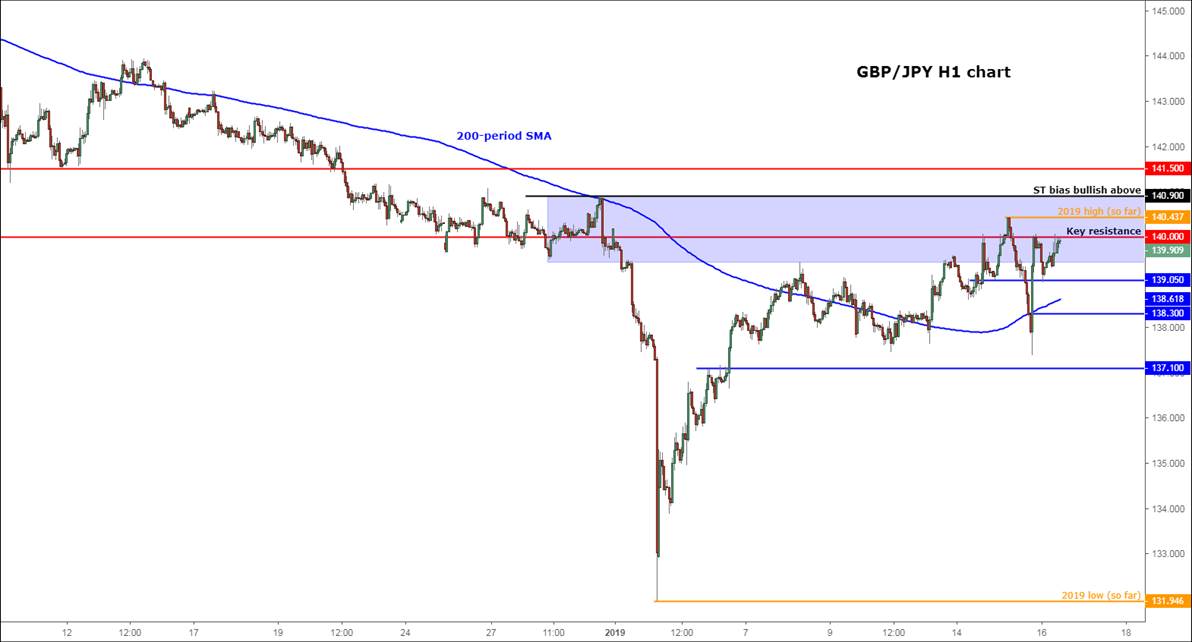Rejection of PM May’s Brexit deal is leading to a no-confidence vote, but perhaps a stronger mandate to negotiate next deal notes Fawad Razaqzada.
Theresa May’s Brexit deal was overwhelmingly rejected by parliament last night with 230 votes and we are back to square one. A motion of no confidence in the government was then immediately tabled by the Labor Party leader Jeremy Corbyn, which is expected to take place at 19:00 GMT tonight. If the government loses the no confidence vote then an early general election will be called. But rebel Tory members of Parliament and the Democratic Union Party are both expected to come back on side and back the government, meaning Theresa May is likely to survive. If so, she will have until Monday to come up with an alternative Brexit plan. This time, she will offer cross-party talks with senior parliamentarians to determine what to do next.
Stronger mandate to renegotiate deal?
Although the biggest parliamentary defeat in history for a UK government might give Theresa May a stronger mandate to renegotiate the withdrawal agreement with the EU— assuming she passes tonight’s confidence vote— it also raises the prospects of a no-deal Brexit. A second referendum, meanwhile, is still unlikely given that the default position of parliament is to work on a soft Brexit deal with both the current government and the main opposition Labor Party still dismissing the idea of going back to the people.
What does it all mean for the pound?
What this all means is yet more delays, further uncertainty and no progress with time fast running out. This is anything but good for business or consumer confidence. The Bank of England’s wait-and-see stance thus continues. As such, there is no fundamental reason for the pound to move meaningfully higher just yet. Expect further choppy, range-bound, price action on the cable and other GBP crosses, within an overall bearish price structure.
UK inflation eases but the markets don’t seem to care
With Brexit developments – or lack thereof – remaining firmly in focus, the pound barely reacted to the UK Consumer Price Index (CPI) numbers released this morning. Granted, the numbers were more or less in line with the expectations, which helps to explain the inaction to some degree. Still, under normal circumstances, volatility does tend to rise around the publication of inflation data. Anyway, for the records, headline CPI eased to 2.1% year-over-year in December, down from 2.3%, but in line with the expectations, while core CPI was 1.9% versus 1.8% expected. Other measures of inflation were mostly weaker than expected, including RPI, HPI and PPI output. According to the Office for National Statistics’ Mike Hardie, the ease back in inflation was partially due to a “big fall in petrol, with oil prices tumbling in recent months… [while] air fares also helped push down the rate.”
Trading the pound
The latest Brexit stalemate is further bad news for swing and long-term position traders, but good for speculators with a much shorter-term focus that trade the ranges and scalp. So, when it comes to trading the pound, it makes sense to remain nimble, take it from one level to the next and move on the next opportunity. That, or completely avoid the pound, if the current market environment is not compliant with your own ideal trading environment.
GBP/JPY retests key 140 level again ahead of confidence vote
It is interesting to watch what the GBP/JPY does around the key 140 resistance level. Yesterday’s defense of this level proved to be temporary, but the kick-back rally was impressive nonetheless. Still, the Guppy hasn’t cleared this hurdle cleanly to suggest a change in the trend. So, let’s see if rates start to breakdown again from here as the Brexit deadlock continues and time runs out.

Source: TradingView and FOREX.com





















